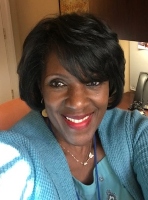By Carmen Hilton, MSW, LCSW
and
Rachel Allende, LICSW
This year I had the privilege along with two of my colleagues to present at the AOSW Annual Conference in New Orleans. My own curiosity about conference attendees led me to look around on the Whova app. I came across a group chat by Hispanic members expressing a desire to form a Special Interest Group for members who work with Spanish-speaking patients. I reached out to the group and expressed my interest in contributing to forming this much needed group. Looking back now, I realized that somehow, I came to be the one to coordinate and facilitate our first brainstorming meeting back in July. The meeting was well attended; the group shared and discussed mutual interests, including how to address the health disparities we see with our Hispanic patients. The attendees made a solid connection and decided that a SIG would be a great platform and avenue to build relationships, exchange educational materials, conduct research, and share best practices. In August, Rachel Allende, LICSW, reached out to me and expressed an interest in co-leading the group. Finding that we had a shared vision of the intent and purpose of the group, we decided this would be a good opportunity for collaboration. Together and with the support of several AOSW members, we submitted our application for the Hispanic/Latine SIG. We were thrilled to have our application approved and held our Inaugural meeting on September 28. The meeting was well attended by AOSW members from across the country.
The creation of this Special Interest Group feels especially timely given demographic shifts in our country. I was recently on the U. S. Department of Health and Human Services’ Office of Health Policy website, and it states that Latinos are the largest racial or ethnic minority group in the United States and are projected to grow to 25% of the population by 2045. According to the CDC (Centers for Disease Control and Prevention), cancer is the leading cause of death for Hispanic or Latino people in the United States. Compared to members of other races and ethnicities, Hispanic and Latino people have higher rates of getting and dying from certain kinds of cancer:
- Hispanic women have a high rate of getting cervical cancer and the second highest rate of dying from cervical cancer, after non-Hispanic Black women.
- Hispanic people have the second highest rate of dying from liver cancer.
- Hispanic people and non-Hispanic Black people have the highest rates of getting and dying from stomach cancer.
We know that there are significant barriers to health care for the Hispanic/Latine population, such as language barriers, lack of insurance coverage (data from 2010 shows that they are twice as likely to be uninsured as non-Hispanic White people) lack of paid sick leave, lack of access to education and more. The website noted that cancer screening is associated with higher education levels and that Hispanic people with higher education are more likely to be screened. Only 67% of Hispanic people had a high school education in 2015, compared to 93% of non-Hispanic White people, 89% of Asian people, and 87% of Black people, according to the U.S. Census Bureau.
Rachel and I feel it is important to foster culturally sensitive oncology social work supports for this growing population of Hispanic/Latine cancer patients and their families. Our hope is that this SIG will grow and flourish to help meet this need. As a group we want to be responsive and proactive in the areas of advocacy, research and patient education, strengthening cross-cultural and multidimensional care to address stereotypes and biases in healthcare. We will encourage the sharing and exchanging of information so that we can educate each other around best practices for working with the many communities that make up the United States’ Hispanic population, increasing member’s shared cultural competence. We will learn from each other’s efforts to advocate for accessible care for Spanish-speakers and immigrants to address those disparities that we see in services delivered to this demographic. We hope this SIG will inspire increased research around the psychosocial impact of cancer on the Hispanic and Spanish-speaking communities, along with research related to interventions aimed at improving access and coping.
Rachel and I invite everyone to look at our community page on SWON. We are using the platform to create a space for members to share existing resources, such as written materials and videos. We are planning to upload information in our library that may cover a broad range of resources directed at the Hispanic/Latine oncology population. We are also planning to create a directory of supports such as patient navigators and associations both here in the U.S. and Latin America to better serve our patients.
We are still working on creating the flow of the group meetings but will always have an agenda with topics for robust discussions. We hope to be responsive to current issues as they impact the Hispanic/Latine patients we work with. Please remember – everyone is welcome! You do not need to speak Spanish to join or contribute to the group.


